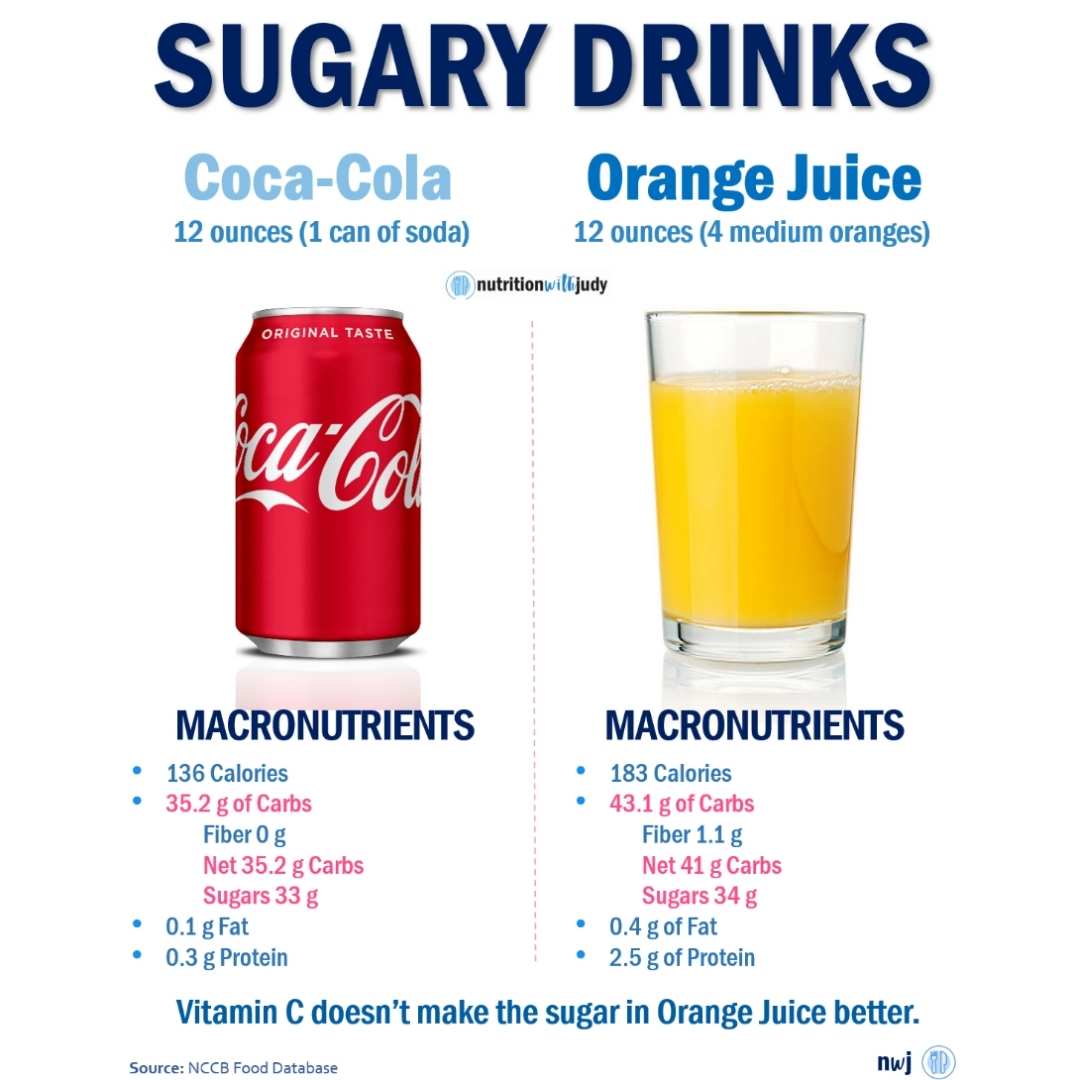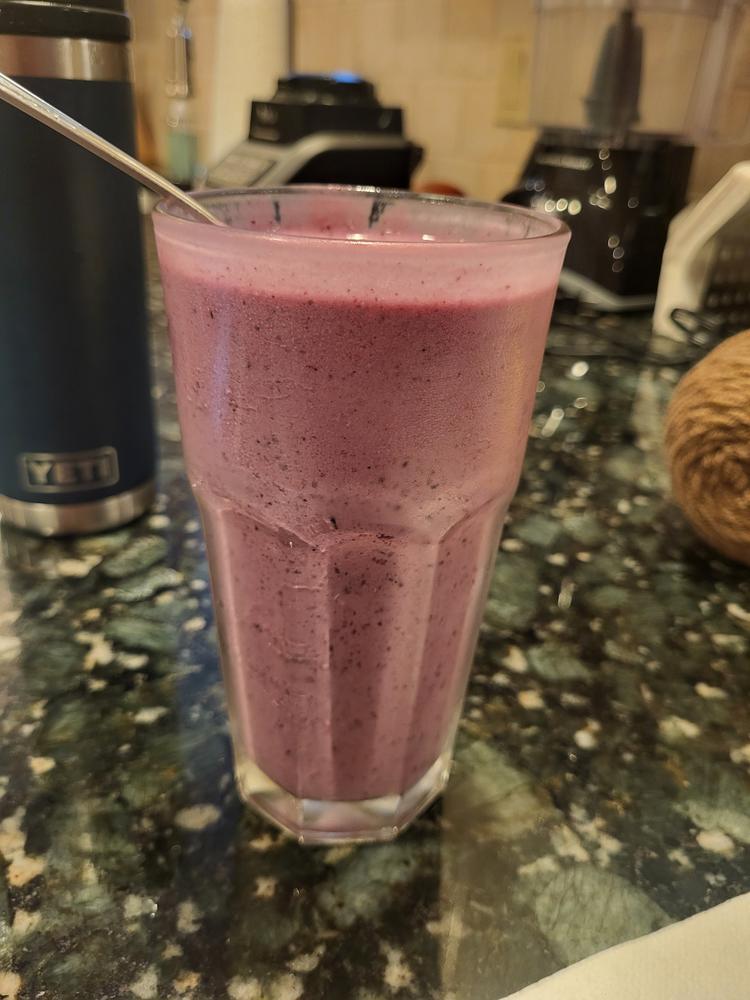
Trap Foods - Fruits & Veggies


Share on:
Note
The following is an excerpt from my post ‘Healthy’ Trap Foods, in which I made a detailed list of foods that I believe to deceptively unhealthy. I’ve broken that list down into easier to digest categories based on what food they are. Linked below are all the individual posts:
- Trap Foods - Breakfast
- Trap Foods - Drinks
- Trap Foods - Fruits & Veggies
- Trap Foods - Grains
- Trap Foods - Meals
- Trap Foods - Savory Sauces
- Trap Foods - Snacks
- Trap Foods - Sweet Spreads
Introduction
I wanted to put together a list of foods that people consider to be healthy, but are really just either a product of good marketing or misinformation. These foods are typically referred to “Trap Foods”, or “Fake Healthy Foods”, as they can lure customers into thinking they’re making better decisions, when in realty these “healthy” alternatives can be just as bad, if not worse.

TLDR (Too Long; Didn't Read)
- Extensively read ingredient labels
- Avoid ultra processed foods, especially ones containing refined sugar, refined grains, and vegetable/seed oils
- Don’t believe marketing claims
- Prioritize nutrient dense whole foods or minimally processed foods

Disclaimer
I’m not saying you should absolutely never eat any of these foods. Moderation is key, and the dose makes the poison. Most of the foods on this list are treats, and should be treated as such, but it’s healthy to enjoy treats every once in a while. Don’t eat them all the time, but don’t forbid yourself from having anything. Find a proper balance.
List of Foods

Jelly and Jam
I love a good PB&J. Which means using a good peanut butter, jelly, and bread. Here, we’re tackling jelly and jam though. A jam is ideally just simmered fruit that’s mildly sweetened, just like my Low Sugar Berry Jam or Strawberry Chia Jam. The problem is that most jellies and jams are just sugar spreads. A 1 tbsp (20 g) serving of Smuckers Grape Jelly contains 12 g of sugar. That’s 60% sugar (about the same as nutella), and with none of the fiber from the whole fruit. Even jellies that claim to be healthy may just be using sugar under different names, like evaporated cane juice or apple juice concentrate.

Outside of making your own jam, your best bets are any low sugar jam or jelly, with less than 4-5 g of added sugar per serving. Trader Joe’s has some good low sugar jellies, jams, and preserves. Good Good is also a good stevia sweetened jam brand, and this Smuckers Low Sugar Strawberry Preserves is a decent option. Just stay away from any jellies labeled as “Sugar free” (like this one), as those are sweetened with sucralose and taste disgusting.
Dried Fruit
Dried fruit is a bit of a mixed bag. On the one hand, it’s just fruit with the water removed, leaving a concentrated source of minerals but natural sugars. On the other hand, some dried fruits are pumped full of added sugars. Generally, raisins, dates, dried figs, and freeze dried fruit crisps are pretty good, as all the sugar in these are just from the fruit itself. Dried apricots and prunes also tend to be unsweetened; just look out for the ingredients list. Even though, you should be mindful of your dried fruit consumption, as it’s very easy to overeat without all the water from the whole fruit. Think about how many raisins you can eat in a handful, versus how many grapes you would eat in 1 bite. Just like with nuts, dried fruit can be a healthy addition to your diet as long as your mindful of how much you’re eating.

The bigger problem though comes from dried fruits with added sugars. Dried cranberries, or crasins, are easily the worst offenders here. Have you ever had a fresh cranberry? They’re insanely tart (which is apparently how fruit used to taste before we selectively bred them to be sweeter). Compare that to dried cranberries though. Dried cranberries are entirely added sugar. You wouldn’t think of putting Gummy Bears on your salad. Raisins are nature’s candy, but craisins are just actual candy. Just a 1/3 cup (40 g) serving contains a whopping 26 g of added sugar! That’s already over the American Heart Association’s (AHA) daily guidelines for added sugar consumption for women. Other sweetened dried fruits to be cautious of include blueberries, mangos, cherries, and bananas.
Fruit Juice
So dried fruit is a highly concentrated source of sugar, even natural, that you should be mindful of consuming. But what if we did the opposite: remove all the fiber, but keep all the water? That’s fruit juice. In reality, a glass of fruit juice, even 100% without any added sugar, is only marginally better for you than a glass of soda. You’ll get some Vitamin C, but that’s really about it. You wouldn’t give your child a Coke with breakfast, so why a glass of orange juice (I’ll tell you: really good marketing). Just eat the whole fruit. At the end of your day, all fructose is the same to your liver, so without fiber to slow it’s absorption, it really doesn’t matter what the source is, even if it any isn’t technically added.

Smoothies
So if dried fruit is a maybe and fruit juice is a hard no, then where do smoothies fall then? Well about somewhere in the middle. Smoothies are made with whole fruit, and thus do contain more fiber than fruit juice. However, the process of blending fruit destroys some of it’s fiber. A smoothie can still be healthy however. Just make sure to add some protein and fat to slow down the spike to your blood sugar. I prefer using protein powder, greek yogurt, and chia seeds for a Protein Fruit Smoothie if I do have one, but peanut butter, almond butter, avocado, or flaxseeds also work as great fat sources. The healthiest smoothies also include some vegetables like spinach as well.

And of course, only use an unsweetened liquid for your smoothies like milk, unsweetened plant milks, or water. Fruit is already plenty sweet without the addition of added sugars from the milk or any additional honey. Smoothies are great to make yourself, but be very weary of ordering one anywhere, since you don’t know how much added sugar is secretly in that glass.
Potatoes
Finally, at long last, we’ve reached the end. I bet you’re asking: why are potatoes, a nutritious whole food, on this list? It’s true that potatoes are a great starchy vegetable, where 1 medium baked potato with the skin (173 g) contains:
- Calories: 161
- Fat: 0.2 g
- Protein: 4.3 g
- Carbs: 36.6 g
- Fiber: 3.8 g
- Vitamin C: 28% of DV (daily value)
- Vitamin B6: 27% of DV
- Potassium: 26% of DV
- Manganese: 19% of DV
- Magnesium: 12% of DV
- Phosphorus: 12% of DV
- Vitamin B3: 12% of DV
- Vitamin B9: 12% of DV
Sweet potatoes are even healthier (and taste better imo), where 1 cup (200 g) of baked sweet potato with skins contains:
- Calories: 180
- Fat: 0.3 g
- Protein: 4 g
- Carbs: 41 g
- Fiber: 6.6 g
- Vitamin A: 213% of DV
- Vitamin C: 44% of DV
- Manganese: 42% of DV
- Copper: 36% of DV
- Vitamin B5: 35% of DV
- Vitamin B6: 34% of DV
- Potassium: 20% of DV
- Vitamin B5: 19% of DV

Both potatoes and sweet potatoes are highly nutritious foods. Sweet potatoes are my preferred carb side to a meal as opposed to pasta, rice, or bread, such as in the following recipes:
- Chopped Burger Bowl with Sweet Potatoes
- Sweet Potato Home Fries
- Baked Sweet Potato
- Spiced Sweet Potato Fries
- Indian Chicken and Sweet Potatoes
- Mediterranean Sweet Potato Salad
- Roasted Pork Tenderloin & Veggies
- Stewed Chicken Cacciatore
- Korean Chicken and Broccoli

Potatoes are on this list because of what’s been done to them, not because what they are. While a baked potato or simply sauteed or roasted cubes are certainly healthy, potatoes are more often than not turned into junk food:
- French fries
- Mashed potatoes
- Hashbrowns
- Tater tots
- Home fries
- Twice baked potatoes
- Scalloped potatoes
- Loaded potato skins
- Potato salad
- Potato chips
- Potato rolls
- Gnocchi

Most of these foods contain extremely high amounts of oil, butter, cheese, or mayo, or they are deep fried (or both). No one thinks that potato chips or French fries are healthy just because they come from potatoes. While all of these dishes can me made in ways that won’t clog your arteries, it’s best to be mindful about what you’re eating, as the calories for all of these can very quickly add up.
Sources
- 10 ‘Healthy’ Foods That Are Worse Than You Think
- Yogurt to salad dressing: Top 10 trap foods and how to avoid them
- What foods are commonly mistaken as healthy?
- 68 ‘Healthy’ Foods That Are Terrible for You
- Fake Healthy Foods: 6 Foods We Think are Healthy
- 9 Health Benefits of Eating Oats and Oatmeal
- 8 Health Benefits of Nuts
- Added Sugars
- The truth about juice
- What does caffeine do to your body?
- Every Starbucks Coffee Drink - Ranked by Sugar Content
- 5 Ways That Drinking Milk Can Improve Your Health
- Does microwave popcorn cause cancer?
- Here are 17 Snacks You Never Knew Were Vegan
- Is White Rice Healthy or Bad for You?
- 5 of the Healthiest Florus for Every Purpose
- Whole Wheat vs. White Flour
- Irish Supreme Court Rules That Subway Bread Has Too Much Sugar to Count as Actual Bread
- 7 Proven Health Benefits of Dark Chocolate
- Dark chocolate health benefits? The good and the bad to this sweet treat
- What are flavanols?
- 8 ‘Healthy’ Sugars and Sweeteners That May Be Harmful
- Habitual Fructose Intake Relates to Insulin Sensitivity and Fatty Liver Index in Recent-Onset Type 2 Diabetes Patients and Individuals without Diabetes
- Coconut Sugar: A Healthy Sugar Alternative or a Big, Fat Lie?
- 6 Reasons Why High-Fructose Corn Syrup Is Bad for You
- Low Dose of Sucralose Alter Gut Microbiome in Mice
- What Are Sugar Alcohols, and Are They a Healthy Sugar Swap?
- Everything You Need to Know About Stevia
- Monk Fruit Sweeteners: Good or Bad?
- Is Allulose a Healthy Sweetener?
- Sucralose (Splenda): Good or Bad?
- 12 Low-Fat Snacks That Are Actually Unhealthy
- 10 ‘Low Fat’ Foods That Are Low In Nutrients
- Seed Oils: Are They Actually Toxic?
- Are Vegetable and Seed Oils Bad for Your Health?
- Margarine or Butter: The Heart-Healthiest Spreads
- Trans fat is double trouble for heart health
- Are Cold Cuts Healthy? Here’s What a Dietitian Has to Say
- Processed meat and cancer: What you need to know
- Sodium Levels of Processed Meat in Australia: Supermarket Survey Data from 2010 to 2017
- The 18 Best Protein Sources for Vegans and Vegetarians
- 7 Health and Nutrition Benefits of Potatoes
- 6 Surprising Health Benefits of Sweet Potatoes
 Poor Man Protein
Poor Man Protein